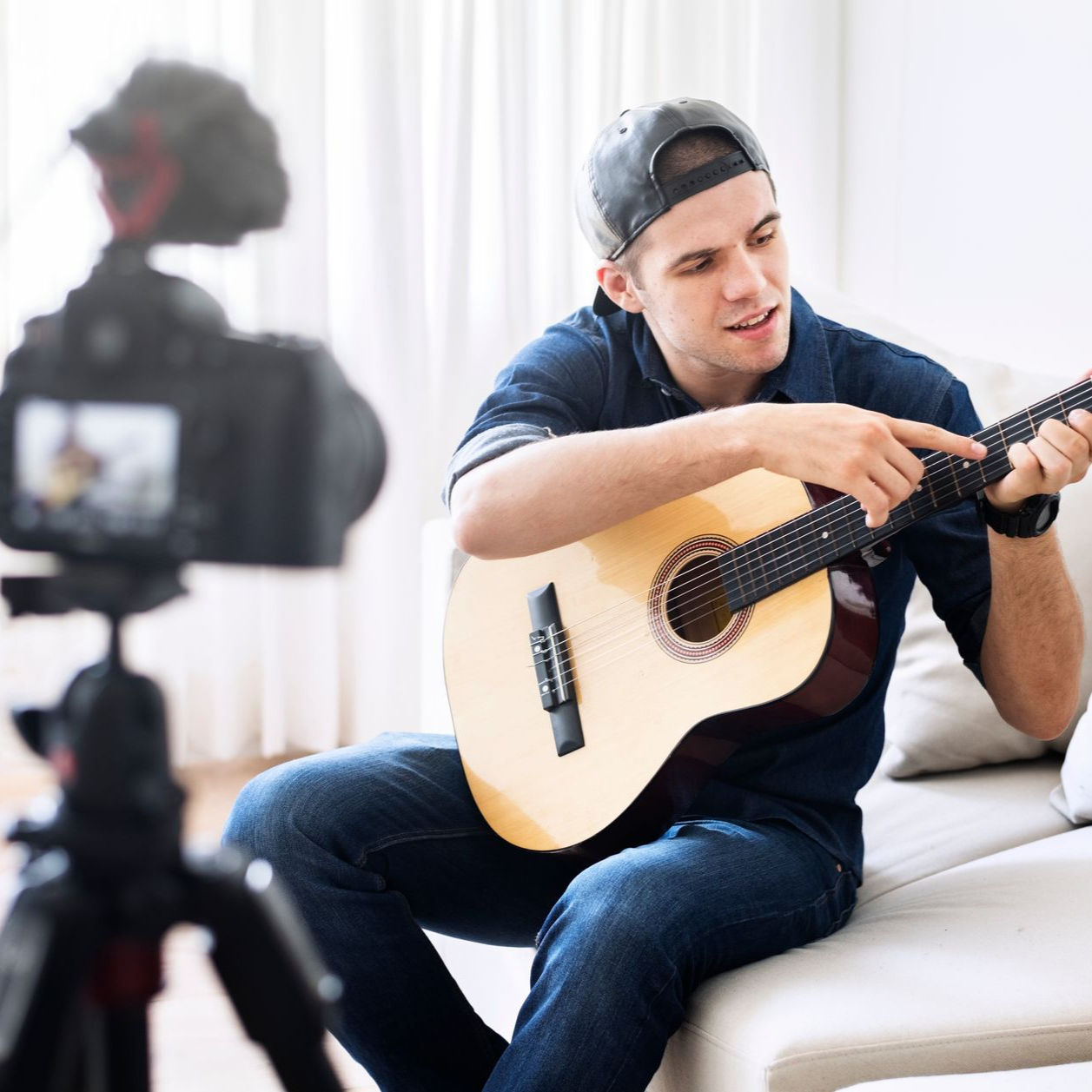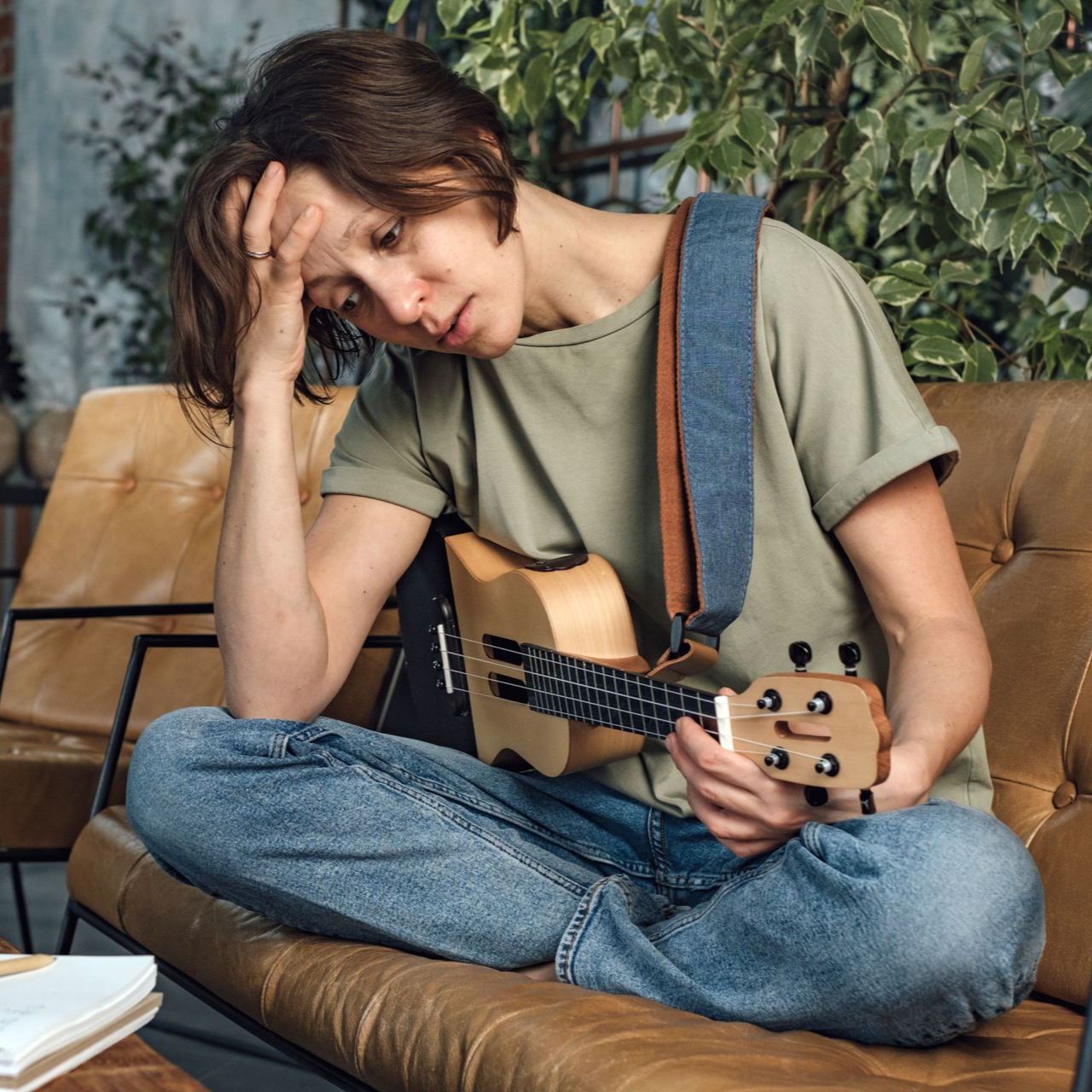How the rule of thirds works
Have you ever heard of the 'rule of thirds'?
Whether you have or haven't it's something you really should be paying attention to when making your videos. In fact it's so important that without it your videos will just look ... well ... odd!
So let's find out what it is, why you need to follow it and a few other things to consider.
What is the rule of thirds
The rule of thirds is a kind of unwritten law that has been followed in visual images for centuries. Many of us don't realise it's there but we are so conditioned to seeing things in this way that when something doesn't follow this rule it looks odd and we don't know why (more on that later).
Most of us are used to watching still or moving images in two aspects
- Landscape: long edges top and bottom like a landscape picture.
- Portrait: short edges top and bottom like a portrait picture.
The rule of thirds splits up these two aspects into 9 boxes with two horizontal lines and two vertical ones. Like the image below.

Artists, photographers, movie makers and videographers all compose their images according to this grid. If they want the viewer to focus on something within the image, they place it at a point where the lines cross or sometimes just along one of the lines.
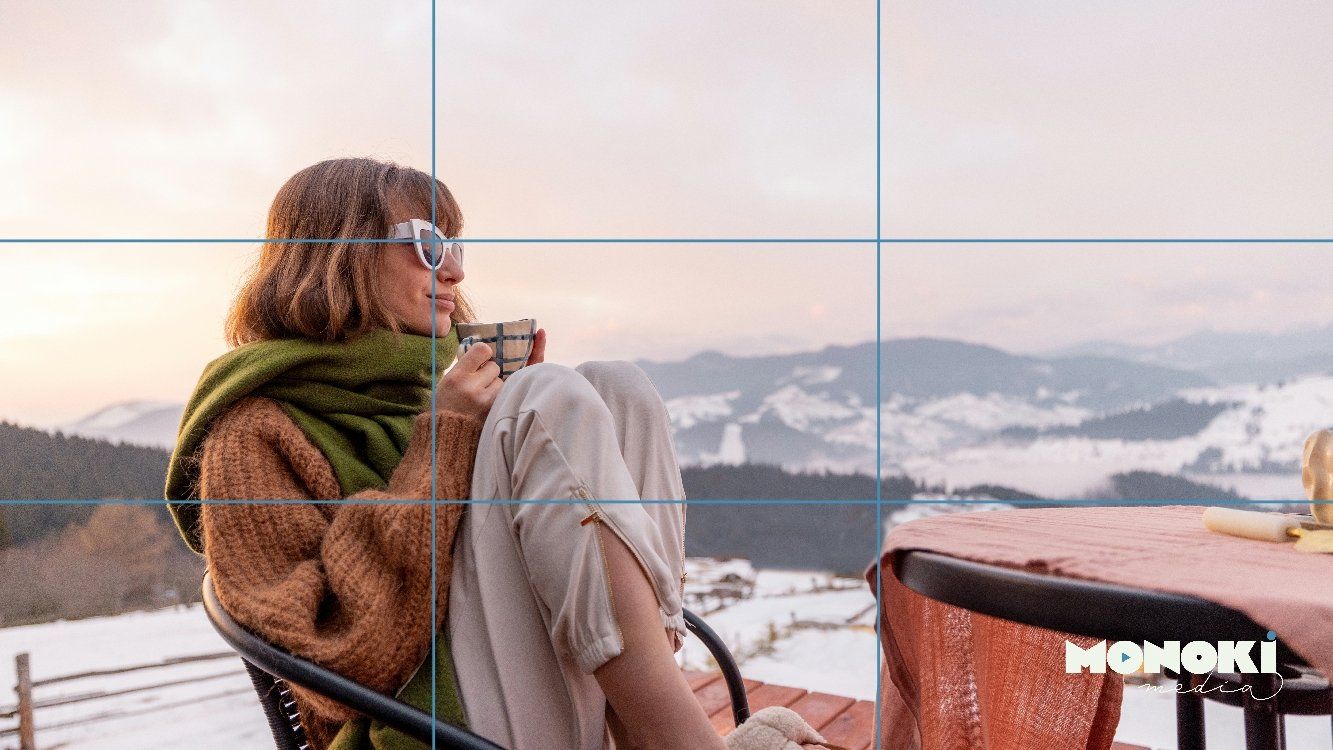
Normally with film or video, when there's a person talking in shot, they are placed at eye level to the viewer rather than us looking at them from above or below. For example when anyone is talking to camera or in an interview setting.
Now you know it exists you will be able to see the rule of thirds in action everywhere. The next time you watch something on TV or see a movie try to see how the director has used the rule of thirds to frame virtually every single scene.
In fact, give it a go now. Take a look at this clip from Back To The Future (best film ever, no contest) and see if you can spot when and how the director, Robert Zemeckis uses the rule of thirds.
How to use the rule of thirds
When you are setting up your camera for filming, make sure you are following the rule of thirds so your viewer sees something they come to expect from a professionally shot video. If you are talking to camera for instance, follow these simple steps:
- Place the camera at eye level so it appears you are looking directly at your viewer rather than down at them or up at them.
- Make sure your eyes fall along the top line of the grid.
- If you are facing the camera you can either centre yourself in the frame at either of the two crosshairs.
When framing an image, always try to imagine the camera is a person. The lens of the camera is the window through which they see your world. By thinking in this way it will help you to set your camera at the right height and your subject within the frame.
All cameras and smart phones will have a setting enabling you to see these 4 lines on screen at all times to help you frame your image properly.
You'll see from the image below I've considered two points of focus, me and the microphone. Both are placed within the crosshairs. Now let's look at what happens when there are two people on screen.
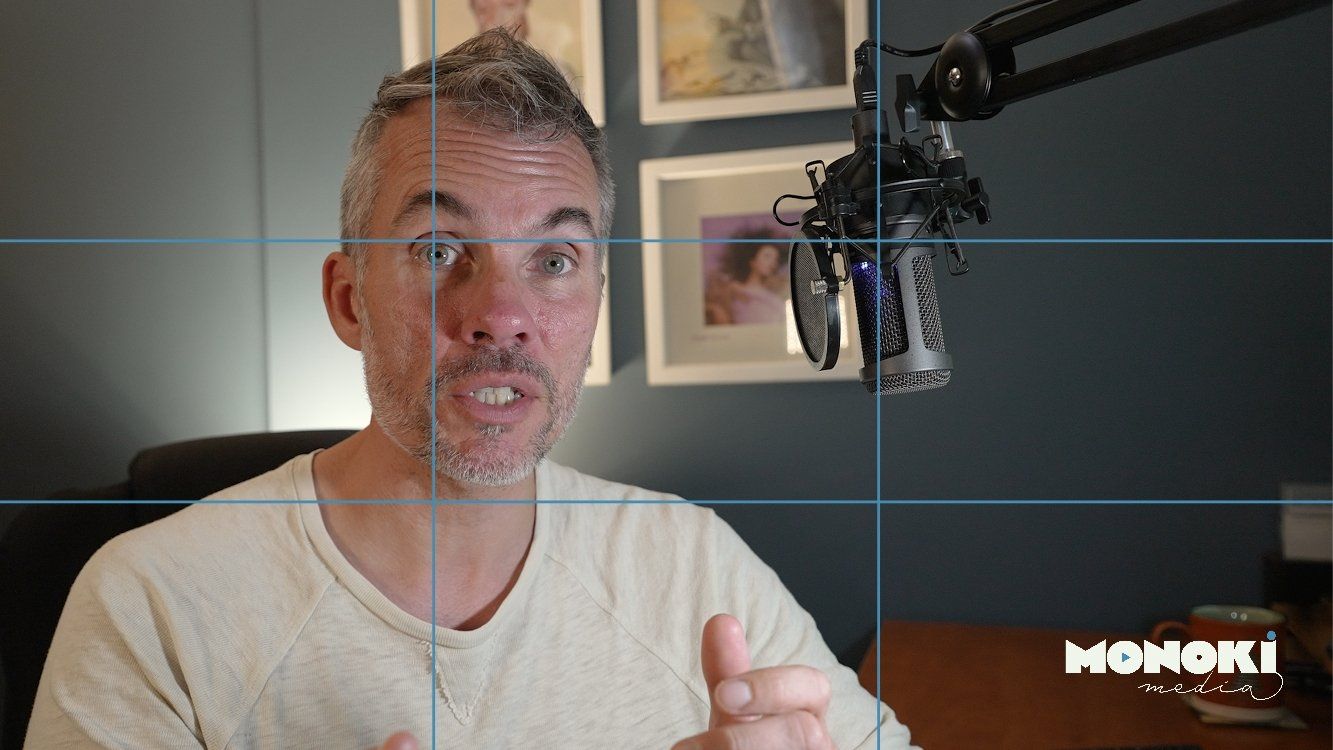
Dealing with more than one focal point
Let's say you're setting up for an interview and there are going to be two people appearing on camera at the same time. In this situation there are essentially three people to consider. The two people on screen and the viewer (or the camera). Therefore:
- Place the camera at eye level so your viewer is looking at both subjects directly rather than down at them or up at them.
- Face your subjects slightly but not directly facing each other (so the viewer feels included) but make sure they are looking towards each other unless they are addressing the viewer.
- Place each of your subjects in the two crosshairs along the top line.
The invisible interview
There is a third scenario that works really well and that's if you interview someone without having yourself appearing on camera. Remember we are regarding the viewer (or camera) as another person in the room.
In this scenario the person being interviewed is still going to be directing their answers at you and not the camera. So they will need to look at you even though the viewer won't be able to see you.
- Place the camera at eye level so your viewer is looking at the subject directly rather than down at them or up at them.
- Sit or stand next to the camera but not in shot.
- Place your subject in the top crosshairs at the furthest point from you.
- Make sure the subject is looking at you.
Take a look at this video for an example of the invisible interview.
Using negative space
There is one other scenario we haven't considered, negative space. This is something you'll see movie makers using quite a lot to their advantage. Because we are so conditioned to viewing everything according to the rule of thirds, negative space can encourage the viewer to anticipate something coming.
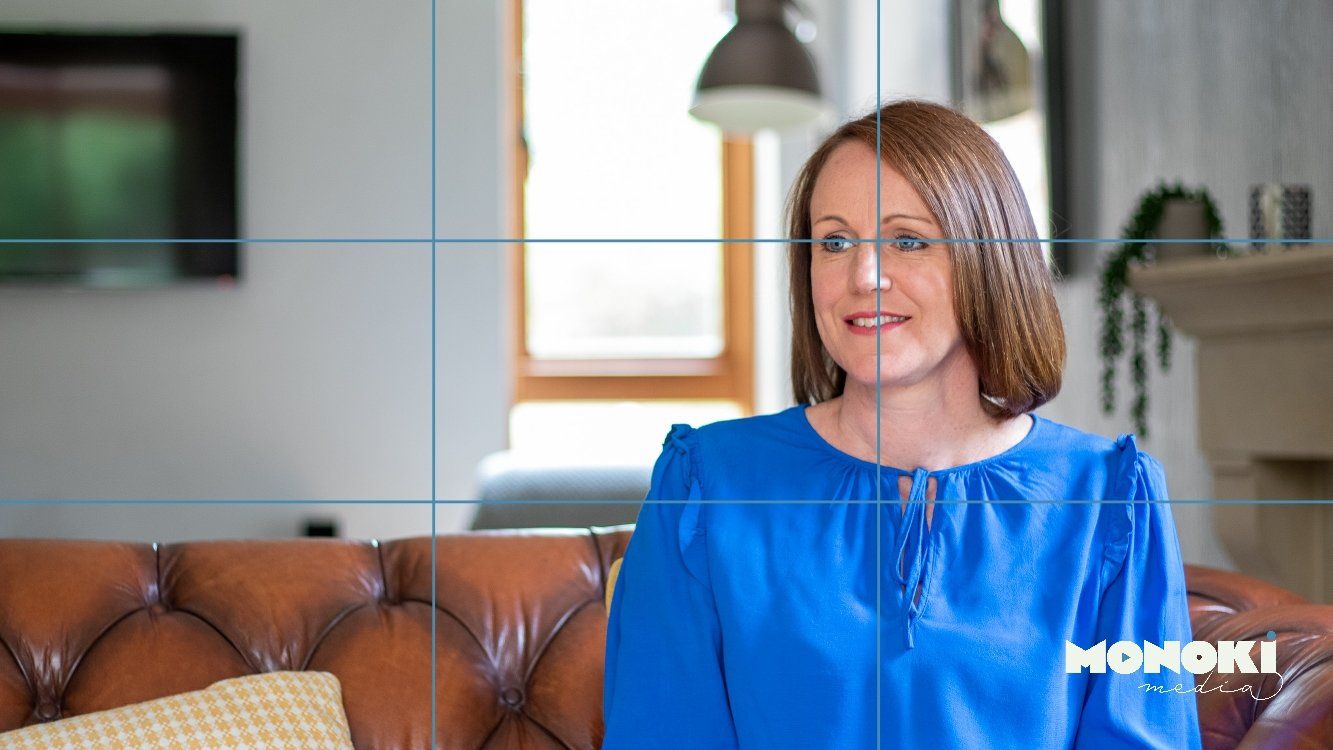
Look at the image above. Helen is looking at and talking with someone off camera. We don't have to be able to see that person, our brain can fill in the blanks.
However if Helen was facing and talking to camera (remember it's a person) we are tricked into expecting that something is going to occupy the second set of crosshairs. Because this space is currently unoccupied we call it negative space.
This can be effective if you are going to use the negative space for text for example or someone is going to come and sit down next to her.
You'll often see negative space used to great effect in thrillers or horror movies. There might be a creepy door slightly open in the negative space and we subconsciously expect someone (or something) is going to come bursting through at any moment.
Take a look at this brilliant opening clip from the movie 'Punch-Drunk Love'. The director, Paul Thomas Anderson uses negative space to build tension for nearly two minutes in several different shots before ... well, you'll need to watch to find out.
Want to learn some more?
You'll no doubt be aware that, as well as making videos, we love to teach you how to make your own.
We hold many training days where we come to you and help you learn any aspect of video making or video marketing that you need to get you to the next level.
These days are bespoke to you and you can even invite a bunch off friends or colleagues over to share the cost. Click on the button below to see how our coaching works.
